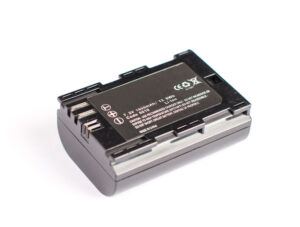
Government Narrowly Avoids Shutdown
It’s that time of year in the federal government again: budgeting time. And for a while, it looked like the government would once again be brought to the brink of a shutdown over the spending bill. However, at the last minute, representatives from both sides of the political aisle worked together to pass the bill, which will keep the federal government open through at least early December.
The big concern with the budget this time around was that the bill didn’t allot any funding for Trump’s border wall. This outraged the president, who immediately responded with angry tweets accusing the Democrats of being soft on crime and border protection. The president also encouraging Republicans to take a firmer stance. The very conservative House Freedom Caucus agreed with the president and refused to vote for the bill unless it included spending for Trump’s wall. Other conservatives also voiced concerns that the bill didn’t cut spending. But the majority of Republicans supported the bill anyway, praising the new budget for continuing to provide funding to support the military, fight the opioid crisis, and other important bipartisan issues.
Ultimately, the House of Representatives voted overwhelmingly 361-61 to approve the bill. It already passed the Senate earlier this month with a vote of 93-7. As a result, Trump has now reversed his earlier stance against the bill, saying that he will sign it to avoid a government shutdown.
Dig Deeper Lately, discussions over spending often result in the threat of a potential shutdown of the federal government. Using Internet resources, determine what is meant by the phrase “government shutdown.” If the federal government were to shut down, which departments would remain open? Which would close?
Dunkin’ . . . What?
In an effort to update its brand, as of January 2019, Dunkin’Donuts will be dropping the word Donuts from its name to become simply Dunkin’. The company first began experimenting with this name-change in 2017, when it changed the name of one store in Quincy, Massachusetts. Since then, it has also shortened its name at 30 shops in the Boston area and 20 more nationwide.
Understandably, some Dunkin’ Donuts fans aren’t too excited about the change. But the company argues that it sells a lot more than just doughnuts and pastries, such as cold nitro-brew coffee. In fact, its beverage sales have become about 60 percent of its total sales. The company is hoping that its new, updated brand will carry it forward successfully for generations.
Dunkin’ isn’t the first well-known company to shorten its name. In 2011, for example, Starbucks Coffee shortened its name to just Starbucks. Earlier this year, Jo-Ann Fabrics became simply Joann. This trend–towards the short and simple–is catchier and more modern than the older, more cumbersome names. Plus, they alert customers to the wide array of products these companies offer: for example, Starbucks sells many food products in addition to coffee, and Joann sells a wide range of arts and crafts materials and home décor.
However, company name changes aren’t always a guarantee of success. This past summer, IHOP (the International House of Pancakes) temporarily changed its name to IHOb (the International House of Burgers). Though the company claims that its burger sales increased by 75 perccent, the marketing ploy was widely mocked by customers.
What Do You Think? What’s your opinion of the Dunkin’ Donuts name change? Will this affect your decision to eat there? Explain.
Trump Backpedals on North Korea
When Trump was running for president in 2016, one of his arguments along the campaign trail was that earlier presidents had been too “soft” on North Korea: in other words, if Obama and others had stood up to North Korea as they began developing and testing their nuclear arms plan, then North Korea would never have become the threat that it is today. But now, Trump is going back on his own pledge.
Experts suggest that North Korea has between 20 and 50 nuclear weapons, and is continuing to develop more. A year ago, Trump took the position that North Korea needed to immediately halt its nuclear program. However, last Wednesday in a news conference, Trump announced that there was no time line for disarmament, and that because North Korea has momentarily stopped its weapons testing, there is no rush or need to set a deadline for the country to dismantle its weapons program.
The president also said that he has been communicating in letters with Kim Jong-Un, the leader of North Korea, and that Mr. Kim wants to reach an agreement about weapons. Trump is very encouraged by this new diplomacy, and so says that he doesn’t feel the need to pose strict deadlines for disarmament. He indicated that disarmament will happen, and that whether it takes one year or five isn’t important.
What Do You Think? Pretend you are the ambassador to North Korea. Which do you think is a more successful way to get the country to dismantle its nuclear arms program: setting deadlines or allowing them to disarm at their own rate? Explain.
New Battery Type

Credit: McGraw-Hill Education
Have you ever wondered what powers electric cars, cell phone towers, and even electric scooters? The answer is lithium-ion batteries. But the problem with these batteries is that they’re very expensive. They also use scarce minerals and have been known to catch fire or even explode. Earlier this week, a California energy company announced that they had created a rechargeable battery that turns zinc and air into energy–at a cost far lower than lithium-ion batteries.
Here’s how the NantEnergy battery works. It is about the size of a briefcase and contains plastic components, shell casing, a circuit board, and zinc oxide. It stores energy by converting zinc oxide to zinc and oxygen. Then it produces energy by oxidizing the zinc with air. A single charge can last for up to 72 hours. Moreover, the batteries can be linked together into a microgrid to power large areas. So far, this method has been used to provide power to 110 villages in nine countries in Africa and Asia, where there was previously no access to electricity. Here in the United States, the plan is to expand the use of the battery first to telecommunications towers, then to homes, and then to electric cars, trains, scooters, and more.
NantEnergy’s battery is also less expensive. It will cost less than $100 per kilowatt-hour, while current lithium-ion batteries cost three or four times that much. The zinc batteries also aren’t likely to explode or catch fire, making them an even more attractive option for the future of energy.
